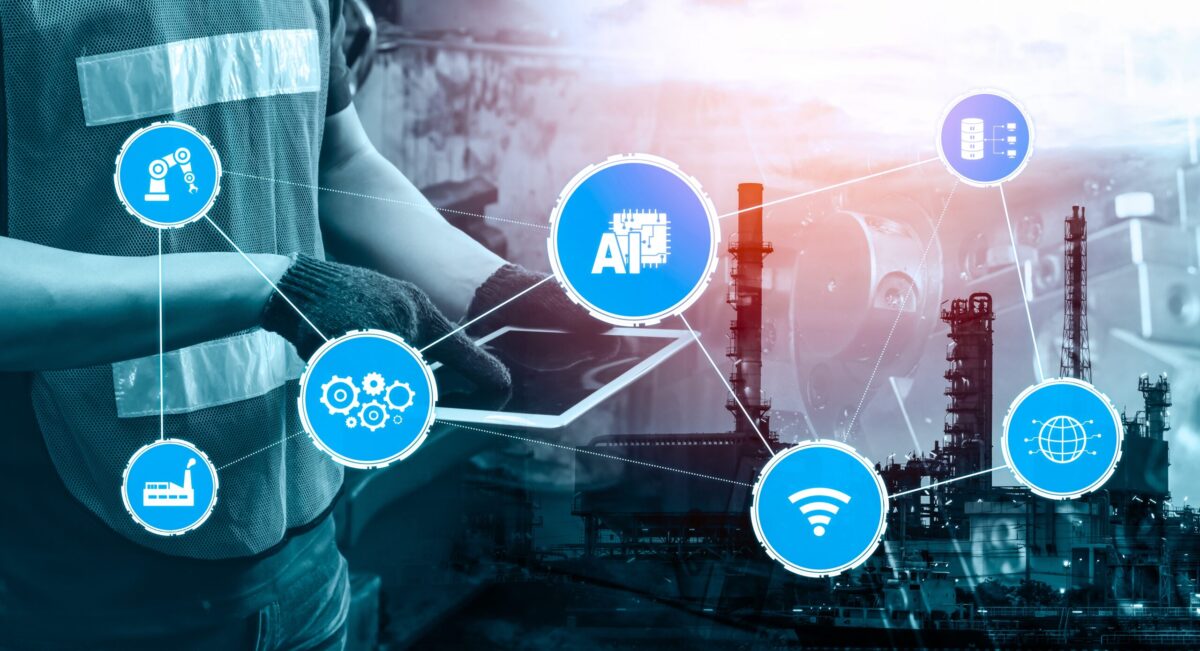
Advancements in core technologies are unlocking a vast array of possibilities for process optimization, automation and simplification, asset tracking, and data management in the Oil and Gas industry.Here is the potential of digital technologies in a nutshell.
AI and Data Analytics and annotation in O&G
- Data analytics: Big data and AI (Artificial Intelligence) can enable powerful analytics platforms to provide insights for improved operational and managerial efficiency to reduce disruptions across the oil and gas supply chain. Advanced analytics combined with cloud solutions enables using autonomous solutions in plants, monitoring operations, and increasing efficiencies
- Seismic data: AI algorithms can easily and quickly identify fault systems from 3D seismic image data provided to them. The algorithm can help spot subtle faults that might be overlooked by human scientists. The deep learning model is trained with geological data. This process can save a substantial amount of money and time in the reservoir development decision-making process.
- Predictive maintenance: a data-driven approach, that analyses the equipment condition to predict when that equipment requires maintenance. This allows for maintenance tasks to be performed before a serious and unexpected failure occurs.
Industrial IoT in O&G
The Internet of Things (IoT) is used in the oil and gas industry to collect, transfer, and analyze raw data in real time to get a clear picture of processes at the facilities, improve operational efficiency, reduce energy consumption, and drive profitability Monitoring pipelines: IoT Leverages the combination of sensor technology for monitoring the pressure, gas flow, compressor conditions, temperature, concentration, and other variables inside the pipeline.
- Asset Monitoring: IoT technology offers intelligent decision making related to the maintenance and health condition of oil and gas equipment. It helps configure the production facilities and reduces the overall maintenance costs by pre-defining the situations through advanced analytics.
- IoT in oil refineries: IoT-enabled sensors can also provide real-time data to control performance parameters. As a result, real-time data is available around the clock to achieve accurate measurements.
- Oil and Gas Logistics: Since oil and gas-containing ships are big, some areas are inaccessible. LPWANs (Low-power wide-area networks) provide monitoring capability to the workers on the ship with real-time data for maintenance.
- Advanced communication – high speed communication infrastructure are key element for automated and autonomous oil fields. Advanced blockchain , fiber , cloud and satellite technologies in high demand in the industry.
Automation in O&G
Oil and gas automation often utilizes sensors based on the internet of things (IoT), predictive and self-learning systems to increase productivity, and expert systems/use of artificial intelligence (AI) to fill in gaps brought on by a skilled labor shortage.
- Automation and Autonomous An automation technology that uses intelligent, software-based robots to automate repetitive, high frequency/volume, and menial mundane business processes. It can significantly reduce closing time and reduce the risk of human errors. RPA is also used to, improve cycle times and achieve overall efficiency in oil and gas supply chains.
- Drones in offshore drilling: Drones can be used to inspect thousands of miles of pipelines at a fraction of the cost of inspections via helicopter. Drones carrying thermal imaging sensors can perform inspections that will help predict the health or critical equipment and can assist in forecasting potential malfunctions.
AR and VR in O&G
VR and augmented reality (AR) enable oil and gas companies to train workers on-field equipment in a simulated environment to build their situational awareness. It can help develop safety procedures at production facilities to address smaller accidents as well as for emergency response it can assist Improved training via solutions of headsets can give practical training to workers without the need to visit offshore plants. And can also Improve maintenance by providing hands-free instruction steps and relevant tools and parts that can significantly increase maintenance efficiency,
Some use cases of digital technologies in the oil and gas industry:
|
PROBLEM |
Opportunity Area |
|
SOLUTION |
|
|
Woodside Petroleum is combining its cognitive science technology with NASA’s humanoid robotic system, R2C3, one of the three humanoid robots developed by the space agency and General Motors, to ultimately design offshore facilities for robot-only interventions and operations. Woodside will begin by researching ways in which the robonaut could perform tasks from more than 300 ideas suggested by the company’s operators, engineers, and maintenance workers.46 “(It’s about) using robotic platform sensor technology to detect and look for errors in the plant well before they become an issue and a robot platform will assist in that,” says Shaun Gregory, Woodside senior vice-president and chief technology officer.47 |
· Rigs and platforms · PSOs ·Underwater installations |
|
PROBLEM |
|
|
SOLUTION |
|
|
BHGE is working to reduce downtime and optimize supply chain associated with the sourcing of complex, customized parts such as production pump impellers. The company would run a laser scan on every part of the impeller to create a 3D model that acts as a digital stock. Using the model, it would then employ an advanced 3D printing metal fabrication technology called direct metal laser sintering (DMLS) to print impellers, in just 10 days as compared to about three months required by traditional methods.48 Although the near-term utility of this innovation is to manufacture critical parts quickly and precisely, the digital stocks, when combined with analytics, open up new avenues in design-material thinking and optimizing operations.49 |
· Offshore risers ·Gas nozzles ·Sand screens ·Subsea injection tools ·Sownhole cleanout tool nozzle ·Drill bits ·Perforated pup joints ·Linger hanger spikes
|
|
PROBLEM |
|
|
SOLUTION |
|
|
A joint industry project (JIP) led by Akselos and LICengineering is helping Shell to advance its offshore structure integrity by combining structural simulations (or digital twins) with sensor data on rigs and big data analytics in the cloud. Data from sensors on a platform capturing information on corrosion, hull damage, strain, wind and sea states, etc., would be incorporated real time in the digital twin using cloud-based solvers.50 By running thousands of simulations on the updated digital twin, the company would not only help its engineers execute an appropriate response immediately but also prototype new and lean structural designs. |
·Rigs and platforms ·FPSOs ·Ships and vessels ·LNG facilities ·Subsea equipment |
Source : Delloite Analysis ” From bytes to barrels The digital transformation in upstream oil ” and gas , 2018
